Stay Updated with Everything about MDS
Thank you! Your submission has been received!
Oops! Something went wrong while submitting the form.
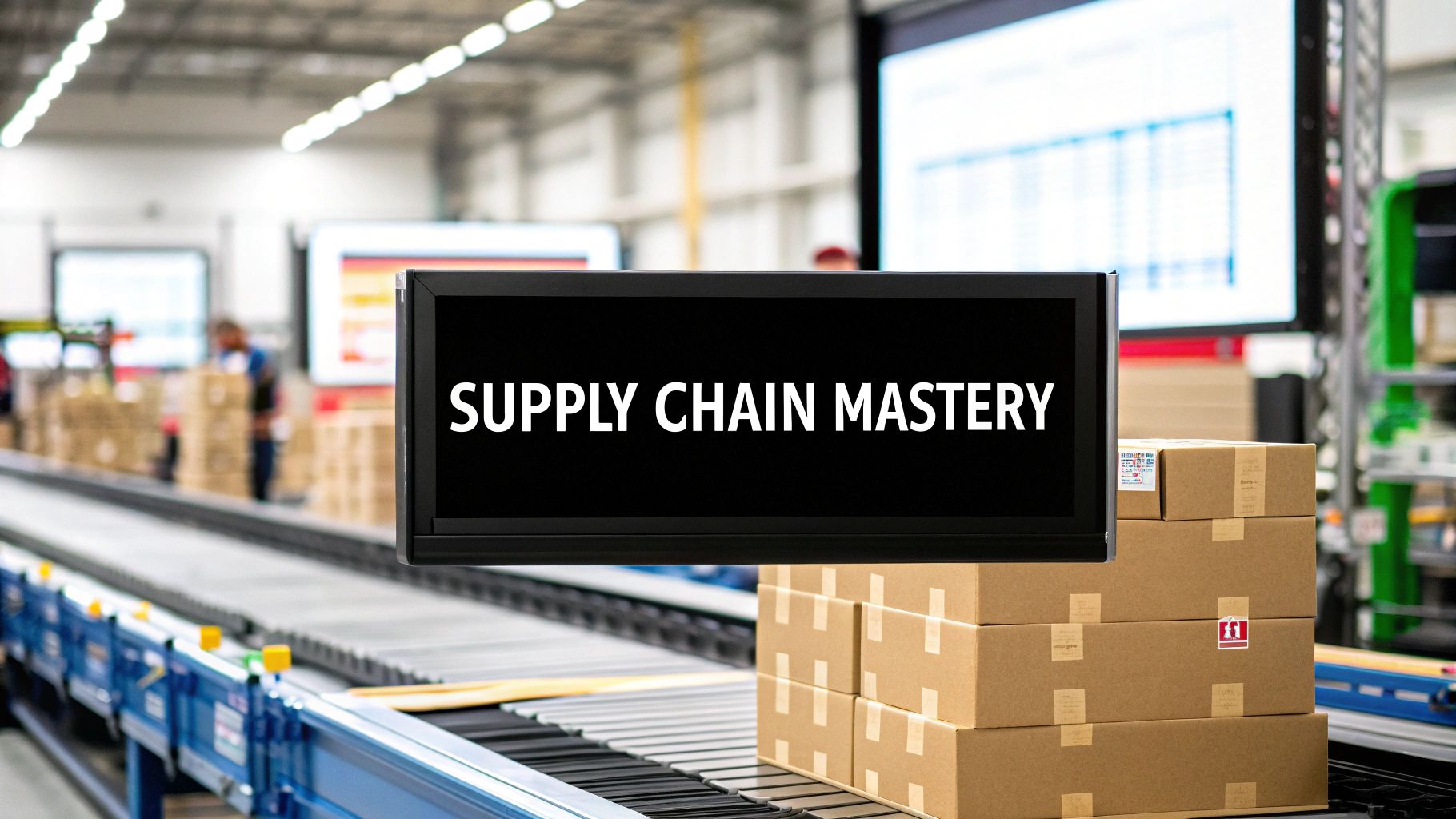
Chilat Doina
August 22, 2025
In the hyper-competitive world of e-commerce, a killer product and slick marketing are just table stakes. The real moat separating fast-growing brands from the rest is operational excellence. A resilient, efficient, and intelligent supply chain is the engine that powers sustainable growth, delights customers, and protects your margins. For high-growth brands, navigating this complexity is paramount.
Getting it right means faster delivery, fewer stockouts, and the ability to scale without breaking. Getting it wrong translates directly to unhappy customers, spiraling operational costs, and a hard ceiling on your success. This guide cuts through the noise to detail 10 actionable supply chain management best practices tailored specifically for ambitious e-commerce sellers. We'll move beyond abstract theory to focus on practical execution.
You will learn how to implement crucial strategies, from achieving end-to-end visibility and mastering demand forecasting to building robust supplier relationships and integrating lean principles. We will also cover essential modern practices like digital technology integration, risk management, and building a sustainable supply chain that resonates with today's consumers. Drawing on insights from top operators, we'll provide the strategic frameworks and tactical steps you need to build a supply chain that's not just a cost center, but a powerful competitive advantage. Each point is designed to be a clear, actionable lever you can pull to improve performance, reduce costs, and support your brand's aggressive growth targets.
End-to-end (E2E) supply chain visibility is the practice of gaining real-time transparency across your entire supply chain, from the initial raw material supplier to the final customer delivery. For a growing e-commerce brand, this means moving beyond siloed tracking numbers and fragmented spreadsheets. It involves integrating technology to create a single source of truth that allows you to monitor inventory levels, production status, and shipment locations at every stage.
This comprehensive view is crucial for proactive problem-solving. Instead of reacting to a customs delay or a stockout after it has already impacted your customers, E2E visibility allows you to see the potential disruption coming and pivot accordingly. This capability is a cornerstone of modern supply chain management best practices, transforming your operations from reactive to predictive.
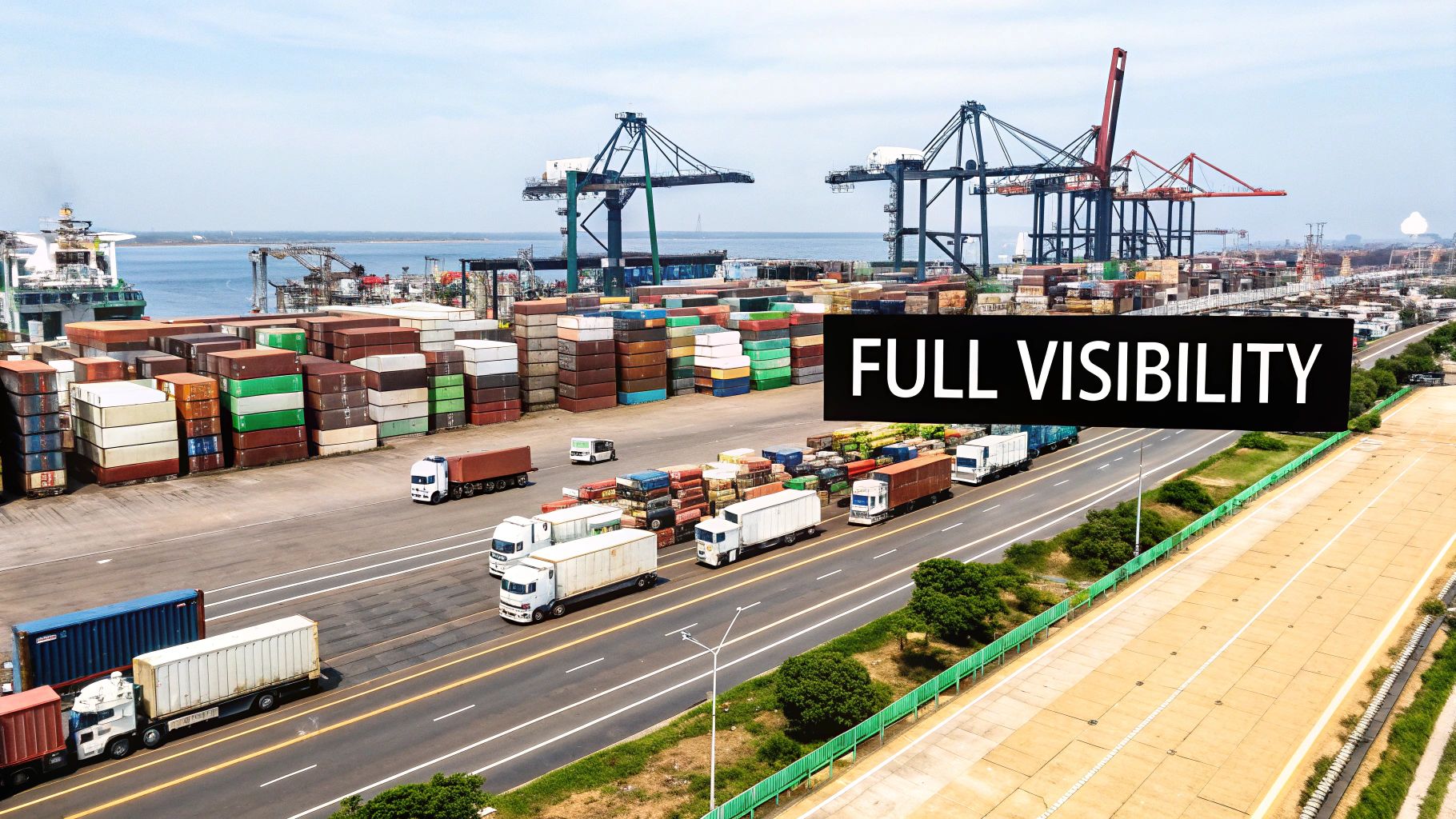
In today's volatile market, the ability to anticipate and respond to disruptions is a significant competitive advantage. Walmart, for instance, leveraged its advanced visibility platform to reduce out-of-stock incidents by an estimated 30%, directly protecting revenue and enhancing customer satisfaction. Similarly, Amazon's mastery of logistics tracking enables its aggressive same-day delivery promises, setting a high bar for customer expectations.
Key Insight: True visibility isn't just about tracking; it's about connecting disparate data points to make smarter, faster decisions that protect your brand's reputation and bottom line.
Implementing full E2E visibility can seem daunting, but a phased approach makes it manageable:
Demand forecasting and planning is a strategic practice that uses historical sales data, market analysis, and predictive analytics to accurately anticipate future customer demand. For a high-growth e-commerce brand, it’s the engine that drives efficient inventory management, preventing costly stockouts during peak seasons and avoiding the cash-flow drain of excess inventory. This involves moving from simple sales projections to a sophisticated blend of statistical models and business intelligence.
This forward-looking approach allows you to align your procurement, production, and logistics with what your customers will actually buy. Accurate forecasting is a fundamental component of supply chain management best practices, enabling you to optimize resource allocation, improve cash flow, and enhance customer satisfaction by having the right products available at the right time.
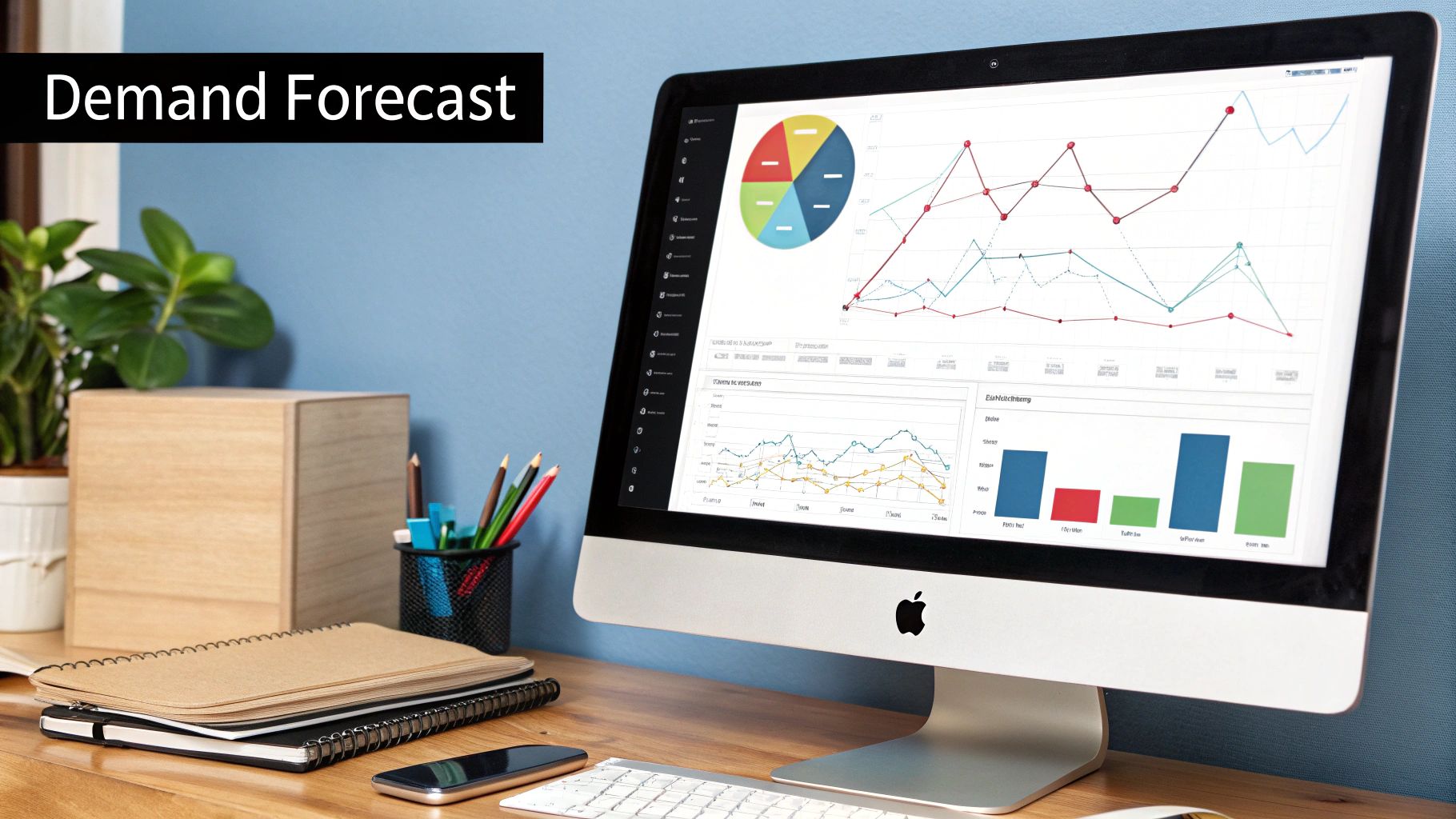
In the competitive e-commerce landscape, misjudging demand directly impacts your bottom line. Zara’s parent company, Inditex, built its empire on demand sensing, enabling a design-to-shelf cycle of just a few weeks to capitalize on micro-trends. Similarly, Coca-Cola utilizes AI-powered forecasting to reduce errors and ensure its products are stocked appropriately worldwide, while Amazon’s use of predictive analytics for anticipatory shipping is legendary.
Key Insight: Effective demand planning isn't about perfectly predicting the future; it's about reducing uncertainty to make smarter, more profitable inventory and production decisions.
Mastering demand forecasting is an iterative process that improves over time. Here’s how to start:
Supplier Relationship Management (SRM) is the systematic approach to evaluating suppliers of goods and services, determining their contribution to success, and developing strategies to cultivate and maintain these relationships. For a scaling e-commerce brand, it means shifting from purely transactional interactions to building strategic partnerships. This practice involves segmenting suppliers, setting performance metrics, managing risks, and fostering collaboration to create mutual value.
This strategic alignment transforms suppliers from mere vendors into integrated partners invested in your brand's growth. Strong supplier relationships are a cornerstone of resilient supply chain management best practices, enabling greater flexibility, innovation, and reliability in your operations.
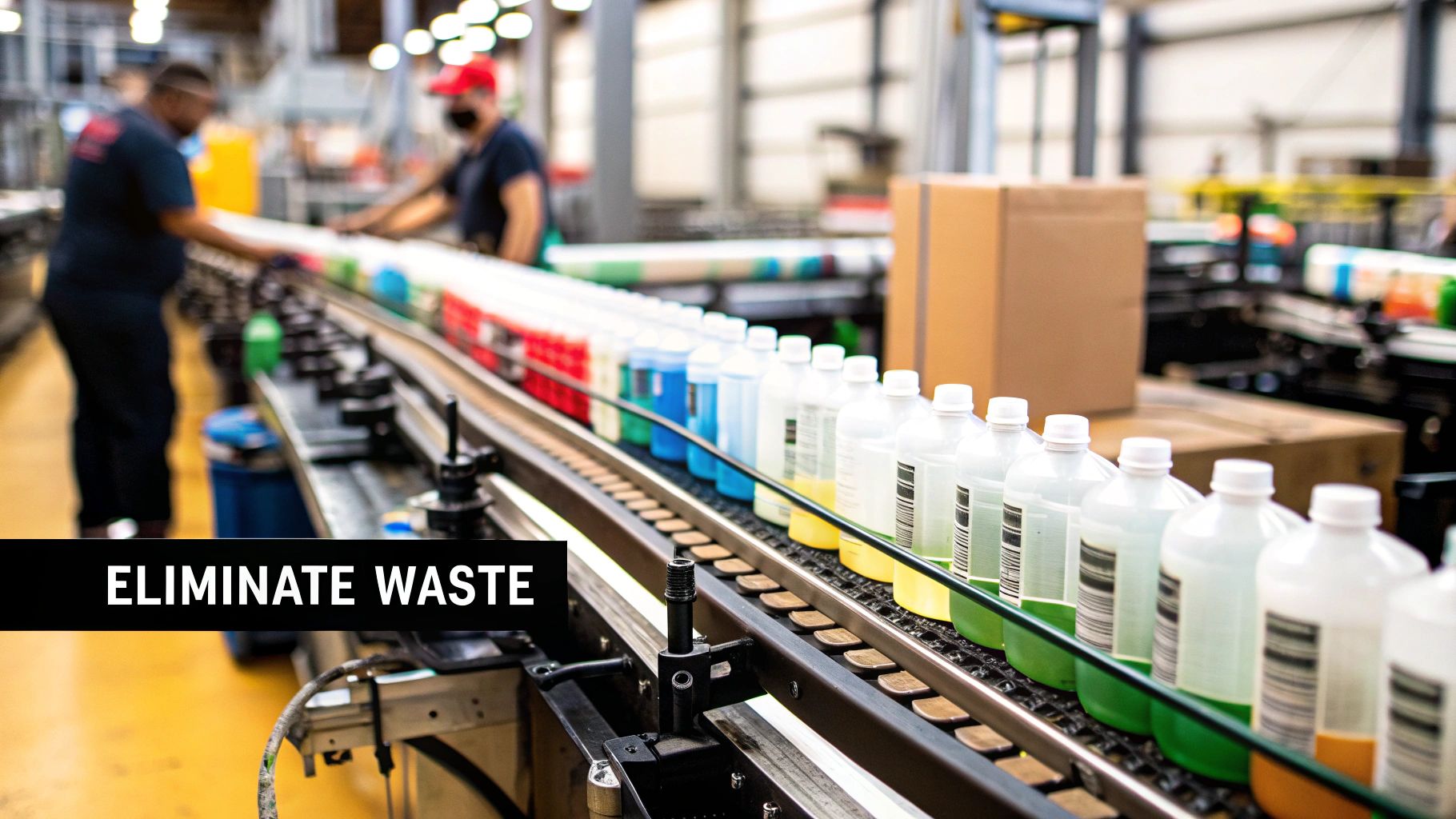
In a market where supply disruptions can halt business, strong supplier partnerships provide a critical buffer. Toyota’s famous production system relies on deep, long-term relationships that involve co-development and continuous improvement, giving it a significant edge in quality and efficiency. Similarly, Apple maintains a rigorous Supplier Code of Conduct, ensuring its partners meet high ethical and operational standards, which protects its brand reputation and ensures a stable supply of high-quality components. These relationships are foundational to their market dominance. Optimizing supplier relationships is a core component of supply chain best practices. For a deeper dive into effective vendor management best practices, consider exploring specialized guides.
Key Insight: Viewing suppliers as strategic partners rather than just cost centers unlocks innovation, improves product quality, and builds a more resilient supply chain.
Building a robust SRM program involves a clear, strategic approach:
Lean supply chain principles are an operational philosophy focused on maximizing customer value while relentlessly eliminating waste. For a growing e-commerce brand, this means systemically removing any activity, process, or resource that doesn't directly contribute to what the customer is willing to pay for. It involves reducing excess inventory, minimizing lead times, and improving the overall flow of goods and information from supplier to end-user.
This approach, popularized by the Toyota Production System, is a cornerstone of supply chain management best practices because it builds a culture of continuous improvement. By focusing on efficiency and value, brands can become more agile, responsive, and profitable in a competitive market.
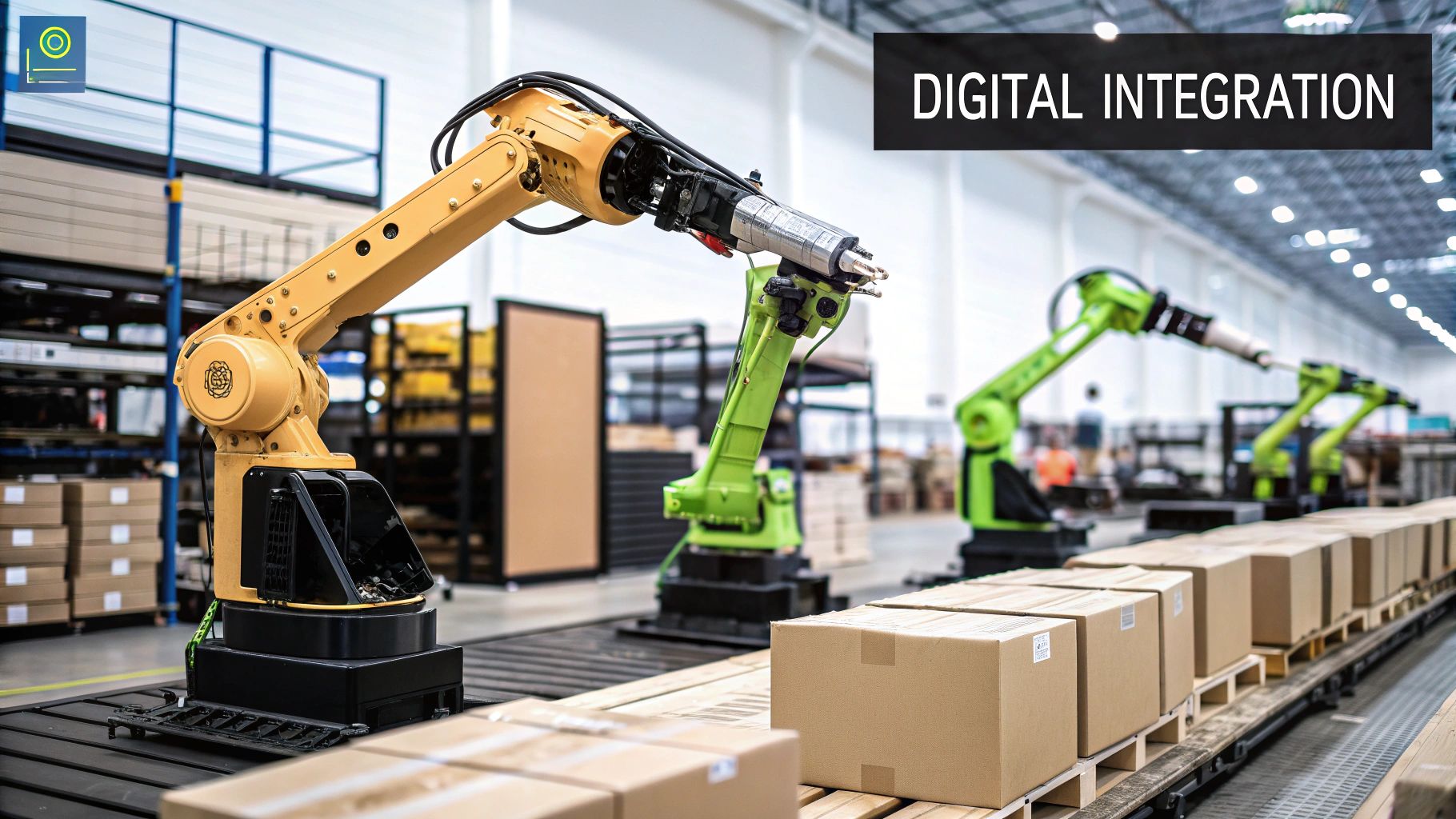
Adopting lean principles directly impacts the bottom line by cutting costs associated with waste, such as storage, transportation, and defects. Zara, the fast-fashion giant, exemplifies this by using a lean supply chain to move designs from concept to store in a matter of weeks, minimizing inventory risk and responding rapidly to trends. Similarly, Dell's pioneering build-to-order model eliminated the waste of unsold finished goods, creating a highly efficient and customer-centric operation.
Key Insight: Lean is not about being cheap; it's about being smart. It reorients your entire operation to focus on delivering maximum value with minimum wasted effort and resources.
Integrating lean thinking requires a systematic approach to process improvement. For a deeper dive into practical strategies, explore insights on how to improve operational efficiency, a cornerstone of lean methodologies.
Risk management and resilience building is the proactive practice of identifying, assessing, and mitigating potential disruptions across your entire supply chain network. For a high-growth e-commerce brand, this means moving beyond simply reacting to problems and instead, creating a system that can withstand and quickly recover from unexpected shocks like supplier shutdowns, natural disasters, or geopolitical events. It involves developing contingency plans, diversifying suppliers, and building in operational flexibility.
This strategic approach is a critical component of modern supply chain management best practices, transforming your network from a fragile chain into an adaptive and robust ecosystem. By embedding resilience into your operations, you can protect your brand's continuity, safeguard revenue streams, and maintain customer trust even when faced with significant disruption.
In an increasingly unpredictable global market, a resilient supply chain is no longer a luxury; it's a core competitive advantage. For example, during the semiconductor chip shortages, Cisco’s established risk management teams were able to re-engineer products and secure alternative components, mitigating the impact far better than many competitors. Similarly, Johnson & Johnson’s post-pandemic initiative to map its multi-tier supplier network allowed it to identify hidden dependencies and vulnerabilities, strengthening its long-term stability.
Key Insight: Resilience isn't about avoiding all disruptions, which is impossible. It's about building the capacity to absorb shocks, adapt quickly, and recover faster than your competitors.
Building a resilient supply chain is an ongoing process, not a one-time project. Here’s a practical way to start:
Digital technology integration is the strategic implementation of advanced tools like AI, IoT, and automation to revolutionize supply chain operations. For a high-growth e-commerce brand, this means moving beyond basic software and embracing technologies that create intelligent, interconnected, and autonomous processes. It involves leveraging data from multiple sources to improve efficiency, enable predictive analytics, and build a more resilient network.
This shift transforms the supply chain from a cost center into a strategic asset. Instead of manually optimizing routes or forecasting demand based on historical data, you can use AI to do it faster and more accurately. This application of technology is a core tenet of modern supply chain management best practices, allowing brands to build a competitive advantage through superior operational intelligence and agility.
In an increasingly complex global market, manual processes and outdated systems create bottlenecks and vulnerabilities. Integrating digital technology is essential for keeping pace. For example, UPS’s ORION (On-Road Integrated Optimization and Navigation) system uses AI to optimize delivery routes, saving the company an estimated 100 million miles and 10 million gallons of fuel annually. Similarly, DHL leverages robotics and IoT in its warehouses to accelerate order fulfillment and reduce errors.
Key Insight: Digital integration isn't about adopting technology for its own sake; it's about strategically deploying tools that solve specific problems, unlock new efficiencies, and deliver a superior customer experience.
A full-scale digital transformation requires careful planning, but these steps can guide a successful rollout:
Sustainable and circular supply chain practices integrate environmental and social responsibility directly into your operations, moving beyond a linear "take-make-waste" model. This approach focuses on minimizing your environmental footprint through ethical sourcing, waste reduction, and creating closed-loop systems where products and materials are reused, repaired, or regenerated. For an e-commerce brand, this means designing products for longevity and recyclability and building reverse logistics to bring them back.
Adopting this framework is not just about corporate responsibility; it's a strategic move to build brand loyalty and operational resilience. As consumers increasingly favor eco-conscious brands, these supply chain management best practices create a powerful differentiator, future-proofing your business against resource scarcity and regulatory changes.
Modern consumers are voting with their wallets for sustainability. Patagonia built a loyal following with its Worn Wear program, which encourages customers to repair and trade in used gear, extending product lifecycles and reducing waste. Similarly, IKEA is working toward a fully circular business model by using more renewable and recycled materials and offering services to help customers prolong the life of their products. These initiatives directly boost brand value and customer retention.
Key Insight: A circular supply chain transforms your waste stream into a value stream, creating new revenue opportunities while building a more resilient and responsible brand.
Integrating sustainability can be a gradual but impactful process:
Collaborative planning is a strategic approach that moves beyond transactional relationships to create a deeply integrated partnership with key suppliers, manufacturers, and logistics providers. It involves actively sharing critical information such as sales forecasts, inventory data, and production schedules to align goals and synchronize operations across the entire supply chain network. For an e-commerce brand, this means working as a unified team with your partners rather than operating in isolated silos.
This shift from adversarial negotiation to cooperative partnership builds a more resilient and agile supply chain. By aligning on a single, shared forecast and plan, all parties can optimize their own operations while contributing to the overall efficiency of the network. This practice is a cornerstone of advanced supply chain management best practices, enabling businesses to reduce waste, improve fill rates, and respond more effectively to market changes.
In a market defined by rapid demand shifts and constant disruption, a siloed supply chain is a fragile one. Deep collaboration turns potential weaknesses into strengths. The landmark partnership between Walmart and Procter & Gamble, pioneering the Collaborative Planning, Forecasting, and Replenishment (CPFR) model, dramatically reduced stockouts and inventory holding costs for both companies by aligning P&G's production directly with Walmart's real-time sales data.
Key Insight: True collaboration transforms your supply chain from a simple chain of transactions into a powerful, integrated ecosystem where shared intelligence drives mutual success and competitive advantage.
Building effective partnerships requires trust, transparency, and a structured approach:
Agile and flexible operations refer to building a supply chain that can rapidly adapt to market volatility, shifting customer demands, and unexpected disruptions. For an e-commerce brand, this means designing processes that aren't rigid but are instead built for responsiveness. It’s about moving away from long-term, fixed plans and embracing an operational model that can pivot quickly without breaking.
This approach allows a business to handle sudden spikes in demand, switch suppliers with minimal friction, or customize products closer to the point of sale. By embedding agility into your core processes, you build a resilient and competitive advantage. This is a crucial element of modern supply chain management best practices, enabling brands to thrive in an unpredictable environment rather than just survive it.
In the fast-paced world of e-commerce, the ability to respond to trends faster than competitors is a significant advantage. The fast-fashion giant Zara is a prime example, with its legendary two-week design-to-shelf cycle allowing it to capitalize instantly on emerging fashion trends. Similarly, Amazon's flexible fulfillment network can dynamically re-route inventory and adjust to regional demand patterns, ensuring it meets its demanding delivery promises even during peak seasons.
Key Insight: Agility isn't about chaos; it's about structured flexibility. It means designing systems and processes with the built-in capacity to change, enabling you to seize opportunities and mitigate risks faster than your competition.
Building an agile supply chain is an ongoing effort focused on removing rigidity and empowering quick decisions:
Continuous improvement and performance measurement is a systematic approach to constantly evaluating, analyzing, and enhancing supply chain processes. For a high-growth e-commerce brand, this means moving beyond fixing problems as they arise and adopting a culture of ongoing optimization. It involves using structured methodologies and data-driven metrics to proactively identify inefficiencies and drive operational excellence.
This practice transforms your supply chain from a static cost center into a dynamic, evolving asset. Instead of accepting current performance as the baseline, you continuously challenge the status quo to find better, faster, and more cost-effective ways to operate. This commitment to refinement is a fundamental aspect of leading supply chain management best practices, ensuring long-term resilience and competitiveness.
In the fast-paced world of e-commerce, complacency is a major risk. A supply chain that was efficient last year may be a liability today. Toyota built its global dominance on the "Kaizen" philosophy of continuous improvement, empowering every employee to identify and solve small problems, leading to massive cumulative gains in quality and efficiency. Similarly, Amazon's obsession with metrics like "order defect rate" and "delivery speed" drives relentless internal cycles of process refinement, continually raising the bar for customer experience.
Key Insight: The most successful supply chains are not just well-designed; they are perpetually improved. Small, consistent enhancements compound over time to create a formidable competitive advantage.
Embedding a culture of continuous improvement is a strategic initiative that requires structure and commitment:
Navigating the complexities of a modern e-commerce supply chain can feel like an unending battle against uncertainty. However, as we've explored, the journey from operational chaos to best-in-class performance is paved with a series of deliberate, interconnected strategies. Mastering these supply chain management best practices is not about implementing a single quick fix; it's about building a resilient, agile, and intelligent system that becomes a core competitive advantage for your brand.
The ten pillars detailed in this article, from achieving end-to-end visibility and mastering demand forecasting to embracing digital technology and building supplier relationships, form a comprehensive blueprint. They represent the shift from a reactive, cost-centric view of logistics to a proactive, value-driven operational engine. For high-growth e-commerce brands, this is the difference between simply surviving market fluctuations and actively capitalizing on them.
Think of these best practices not as a checklist to be completed but as a continuous cycle. Your efforts in supplier relationship management (SRM) directly impact your ability to build a resilient and agile supply chain. Similarly, integrating digital technology is what unlocks the granular data needed for accurate demand forecasting and effective performance measurement.
Each principle reinforces the others:
Translating these concepts from theory to reality requires a methodical approach. Don't attempt to overhaul your entire operation overnight. Instead, prioritize based on your brand's most significant pain points.
Implementing these sophisticated supply chain management best practices is the definitive characteristic of top-tier e-commerce businesses. It’s how 7- and 8-figure sellers protect their margins, delight their customers, and build brands that last. By systematically integrating these principles, you transform your supply chain from a necessary expense into your most powerful strategic asset, fueling scalable growth and cementing your position as a market leader.
Ready to learn how the world's top Amazon and e-commerce entrepreneurs are implementing these advanced supply chain strategies? Join Million Dollar Sellers to access an exclusive community where elite founders share the exact operational blueprints, supplier tactics, and data-driven insights they use to scale their businesses. Get behind-the-scenes access to what’s working right now by applying to Million Dollar Sellers today.
Join the Ecom Entrepreneur Community for Vetted 7-9 Figure Ecommerce Founders
Learn MoreYou may also like:
Learn more about our special events!
Check Events